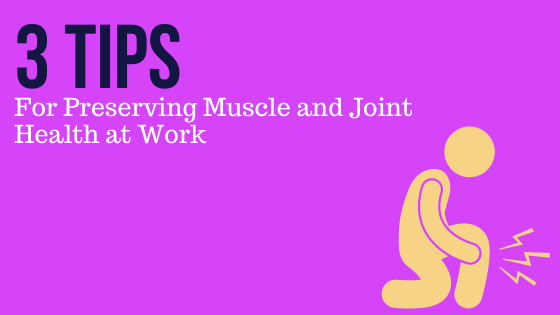Today’s blog is written by Claire Checovich, Exercise & Ergonomics Specialist in the Promega Wellness Center. Reposted from the Promega Connections blog with permission.
The human body is amazing – it can climb towering cliffs, run hundreds of miles, and move many times its own weight.
It can also be annoying – how many of us have been injured just by sleeping or sitting in a funny position?
We’ve almost certainly all experienced the latter, whether we’re hunched over books and papers or staring at a computer for hours on end. That’s where ergonomics and biomechanics comes in.
What is a neutral position?
Simply put, a neutral position is when your joints and muscles are at a position that can be comfortably maintained for a prolonged period of time. It keeps muscles in their natural, homeostatic length; not lengthened or shortened – similar to Goldilocks, they’re “just right.” This neutral position can help prevent aches and pains while sitting for extended periods and promotes muscle and joint health.
A neutral position is as follows:
- Feet flat on the ground
- Knees, hips and elbows at a 90-100° angle
- Back supported by the chair back
- Head straight forward with shoulders relaxed
- Wrists straight and at the same level as your elbows
- If using a computer, keyboard is close to you

Tips for Caring for Yourself During the Workday
Whether you’re in an office building or working from home, it’s essential to stay in tune with your body’s needs throughout the workday. Simple actions, taken regularly, can prevent long-term wear and tear on your joints and muscles.
1. Move and stretch.
Even in a proper neutral position, keeping muscles still can cause stiffness and soreness. Counteract that stiffness by moving and stretching, allowing the muscle fibers to move through their full range of motion. For every 30 minutes of sitting, spend 5 minutes walking, moving, or stretching.
2. Get Creative.
Simple habits can be fun if you keep things interesting. As you’re setting up a desk or workspace, use comfy pillows to support your back or raise your feet with old books. Time to get up and move? A dance break is perfect to stretch your muscles and boost circulation while working from home (or with a fun group of coworkers).
3. Be selfish.
If your body is telling you to move, listen! Studies show that movement is vital to both our mental and physical wellbeing. Take a little extra time to check in with yourself and your body.
Establishing good habits now can pay off in the future. A well-designed workstation and healthy practices can preserve long-term muscle and joint health and help you focus on your work.
WOULD YOU LIKE TO SEE MORE ARTICLES LIKE THIS? SUBSCRIBE TO THE ISHI BLOG BELOW!
SUBSCRIBE NOW!


